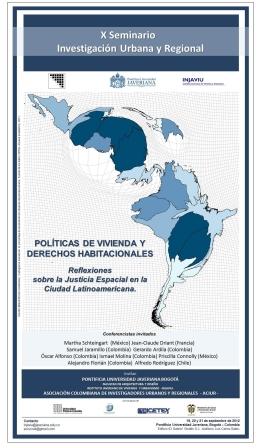Abstract
Como objetivo principal de este artículo, primero, se tratará de determinar las principales razones y efectos de la tendencia de algunos bogotanos que configuran (o han configurado) su entorno y su vivienda a través del uso ilegal del cerramiento, entendida como una práctica urbana que ha empezado a dar lugar a nuevos estilos de vida en la ciudad. Además, se plantea una revisión del impacto que el uso de los cerramientos —incluyendo las prácticas ilegales y los conjuntos cerrados— ha tenido en la construcción y en la definición urbana y del espacio público de Bogotá, en los últimos tres lustros. Para esto se tuvieron en cuenta, principalmente, las experiencias de algunos ciudadanos que residen en barrios delimitados por cerramientos, pero también, se pusieron en consideración distintas lógicas de las instituciones distritales y locales, del sector inmobiliario y de la construcción, y de algunas organizaciones civiles.
This journal is registered under a Creative Commons Attribution 4.0 International Public License. Thus, this work may be reproduced, distributed, and publicly shared in digital format, as long as the names of the authors and Pontificia Universidad Javeriana are acknowledged. Others are allowed to quote, adapt, transform, auto-archive, republish, and create based on this material, for any purpose (even commercial ones), provided the authorship is duly acknowledged, a link to the original work is provided, and it is specified if changes have been made. Pontificia Universidad Javeriana does not hold the rights of published works and the authors are solely responsible for the contents of their works; they keep the moral, intellectual, privacy, and publicity rights.
Approving the intervention of the work (review, copy-editing, translation, layout) and the following outreach, are granted through an use license and not through an assignment of rights. This means the journal and Pontificia Universidad Javeriana cannot be held responsible for any ethical malpractice by the authors. As a consequence of the protection granted by the use license, the journal is not required to publish recantations or modify information already published, unless the errata stems from the editorial management process. Publishing contents in this journal does not generate royalties for contributors.


